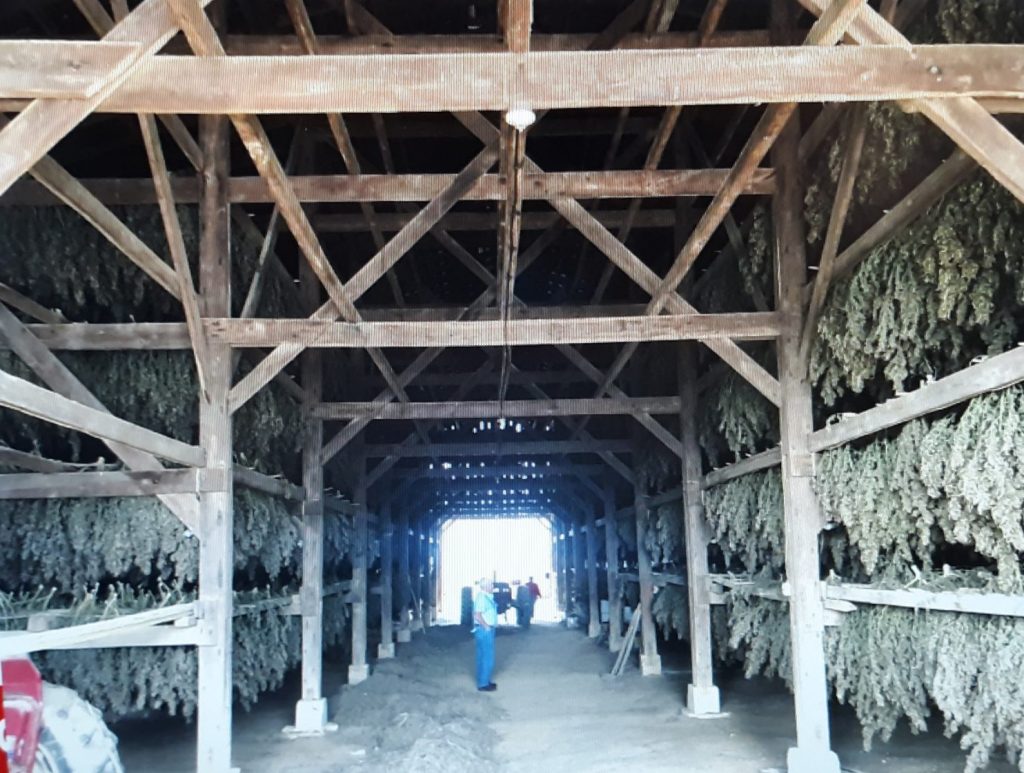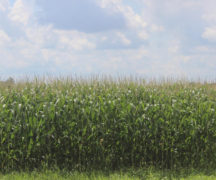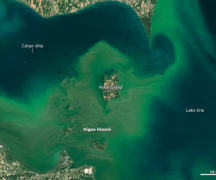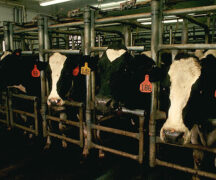By JAN LARSON McLAUGHLIN
BG Independent News
Growing hemp in Ohio, while now legal, has a lot of strings attached for farmers. And it may not be a crop for farmers who are accustomed to working from the seat of a tractor.
But it does have potential, said Brad Bergefurd, horticulture specialist with the OSU South Centers College of Food, Agriculture and Environmental Services.
Bergefurd spoke last week during a virtual meeting of the Northwest Ohio Ag-Business Forum, normally held at the ag center on Ohio 582 north of Bowling Green.
“This is going to be an upcoming crop,” he said of the hemp flowers that are used for CBD oils.
But hemp is not for farmers faint of heart, he said.
Bergefurd compared the work entailed with the crop to fruits, tomatoes, cabbage and sugar beets. Hemp is labor intensive, requires drip irrigation, is raised without herbicides, and must cover at least a quarter acre.
“It’s tough for farmers who are used to working from the tractor’s seat,” he said.
Then there’s also the money involved.
The plants must be lined up about a year in advance, and a $100 license must be secured from the Ohio Department of Agriculture. Farmers who have contracts with CBD processors have to buy plants from them.
The crop cannot be harvested until the ODA gives its OK. Because the stems are woody and thick, they must be hand cut. Then the product has to be dried, similar to how tobacco is in big barns.

One of the problems faced by hemp farmers is that it is very difficult to tell the crop from marijuana.
“That’s a hang up,” Bergefurd said, noting that it can be very difficult to convince law enforcement that it’s a legal crop.
But even if the season goes as planned, there could be complications with the CBD level of the hemp, Bergefurd said.
“You can put all this crop in. But you can’t sell the crop if the CBD level is too high,” he said.
The goal is to try to get high CBD levels without “flirting with too high THC levels,” he said.
If the levels are too high, ODA will reject the crop.
“That field is then confiscated by the sheriff and they set it on fire,” Bergefurd said. “That could be $10,000 an acre going up in smoke – literally.”
Ohio was somewhat late to the hemp growing party, with it finally becoming legal for licensed sites to grow the product last year after 50 years of it being illegal in the state, Bergefurd said.
“It’s been a long time since it’s been a legal crop in Ohio,” he said.
Hemp grows anywhere from 3 to 15 feet high, is a sister to marijuana, and also produces strong fiber.
“Man, that stuff is strong,” he said.
While other states have been perfecting their hemp crops, Ohio is just beginning the experimentation, Bergefurd said.
“We’re sort of scraping up the crumbs,” he said.
This year, 191 Ohio farmers paid for growing permits, planting anywhere from a quarter acre to 30 acres each.
“I’m just a guy trying to figure out how to make some money on this,” Bergefurd said.
The price of hemp in Ohio spiked about a year ago, up to $500 a pound. It then bottomed out in December at about $100 a pound.
“The good thing is, it’s bumping back up,” he said.
“I am hoping we see the price bump up a bit more,” he said. “That number’s not very good compared to beefsteak tomatoes or cucumbers.
“It’s an opportunity, but it’s going to take time to develop,” he said.
Following are some of the rules hemp farmers must follow in Ohio:
- The application fee for a hemp cultivator’s license is $100, and the annual license fee is $500 per growing location.
- The grower must provide ODA with the address, map and GPS coordinates for each field, greenhouse, building or storage facility. Additionally, the grower must provide the number of outdoor acres, indoor square footage and number of plants to be planted.
- The minimum acreage requirement for an outdoor growing location is one-quarter acre. The minimum requirement for an indoor growing location is 1,000 square feet.
- There is a minimum requirement of 1,000 plants required for outdoor and indoor growing locations.
- It is not required to fence the property where hemp is grown. You may post signs identifying it as hemp, but signs are not required.
- There are very few pesticides labeled for use on hemp at this time. Weed control is achieved through cultivation and canopy cover.





